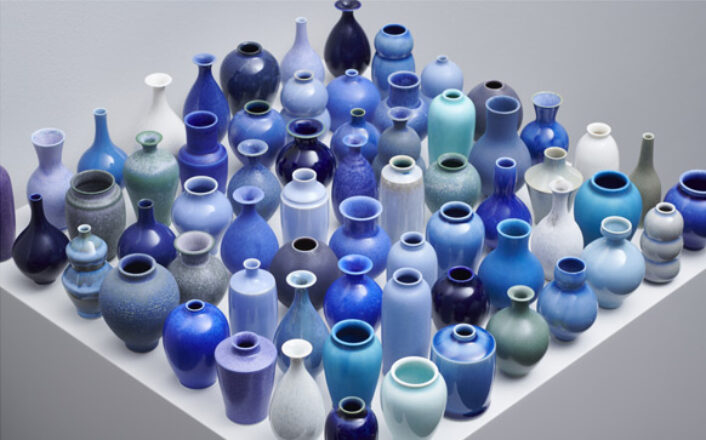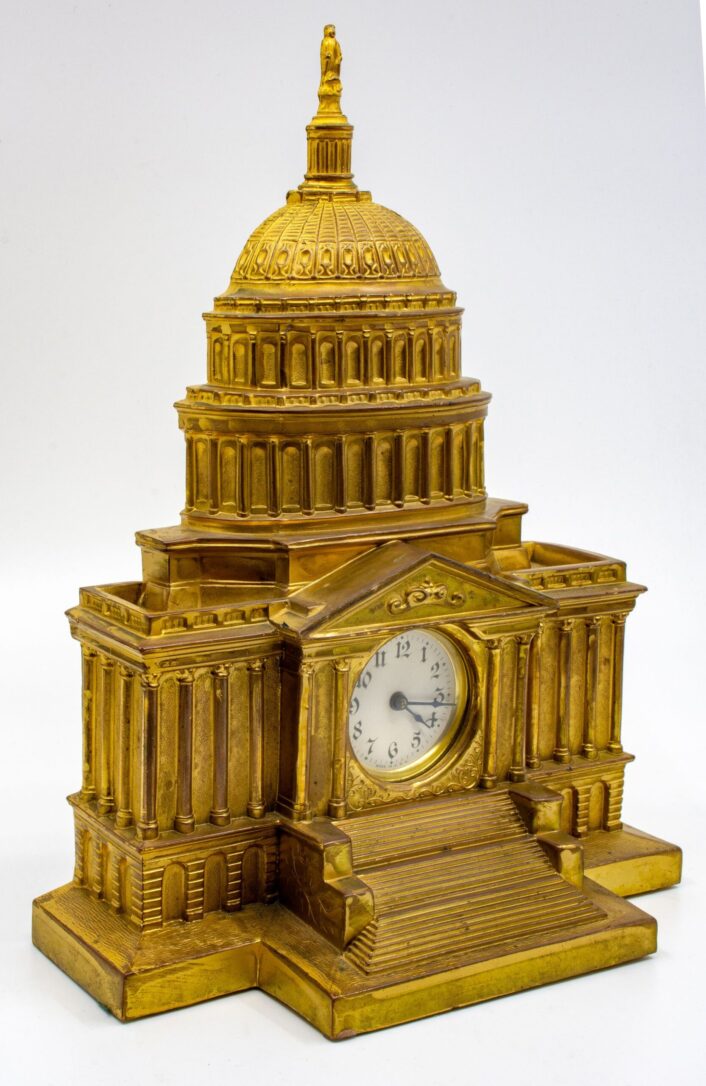Culture
On display- a rare set of 100 Alessi vases
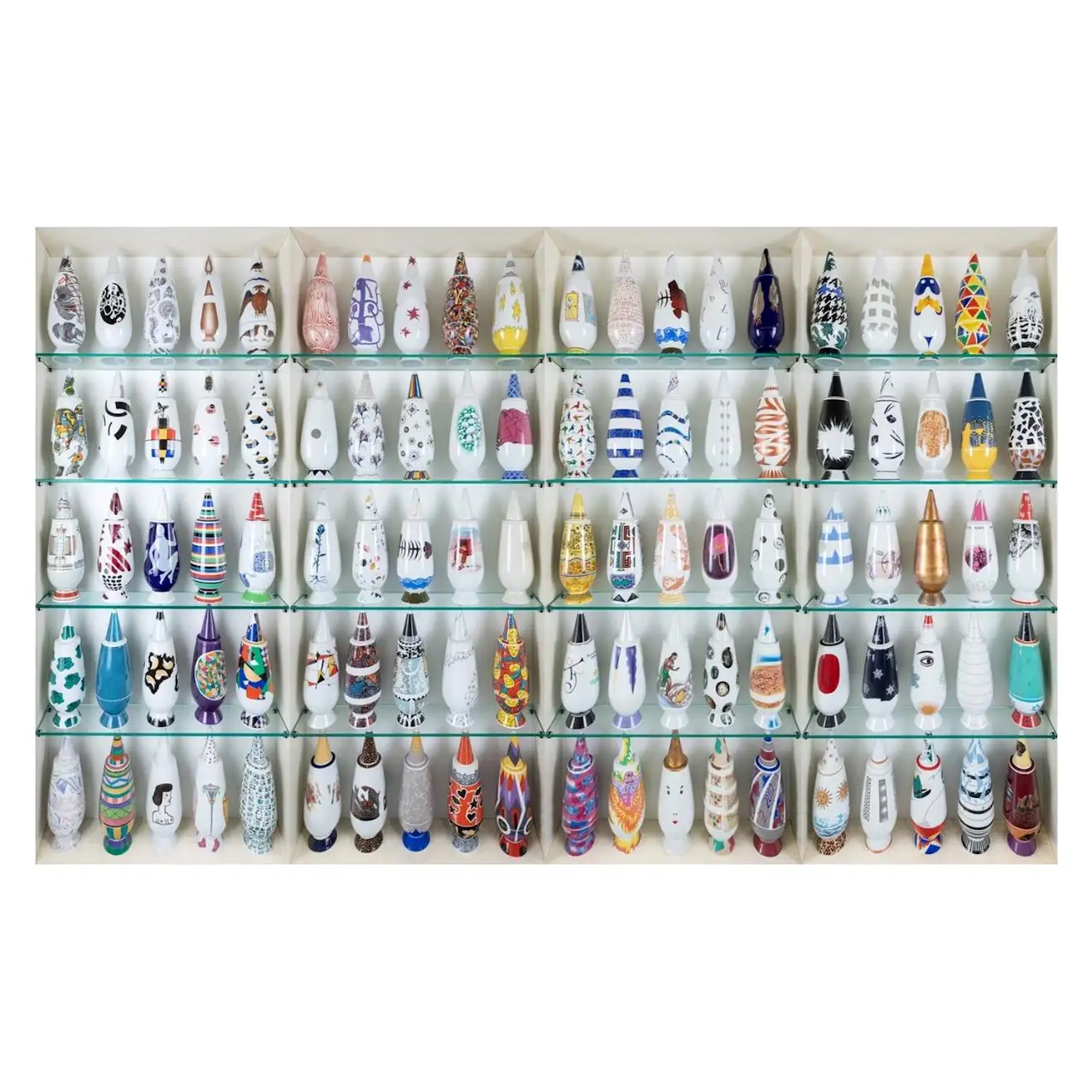
A complete set of Alessandro Mendini for Alessi’s 100% Make-Up vases from 1992.
Image courtesy of: 1st Dibs
The Italian brand Alessi recently celebrated their 100th anniversary in a unique way. The design company was founded in 1921 by Giovanni Alessi Anghini, a former sheet metal worker. For years, he was consumed with copper and skilled craftsmanship; his pieces were made of copper, brass, and nickel silver; and plated with nickel, chrome, or silver. This “trend” has continued for ten decades now!
To celebrate 100 years of existence, Alessi featured the “Alessi 100 Values Collection,” a project that was the brainchild of Alessandro Mendini, the late architect from Milan who was a renowned figure in 20th-century design. About the breathtaking collection (courtesy of Made in Design), “This collection celebrates the values that define the identity and practice of the Dream Factory (Fabbrica dei Sogni).”
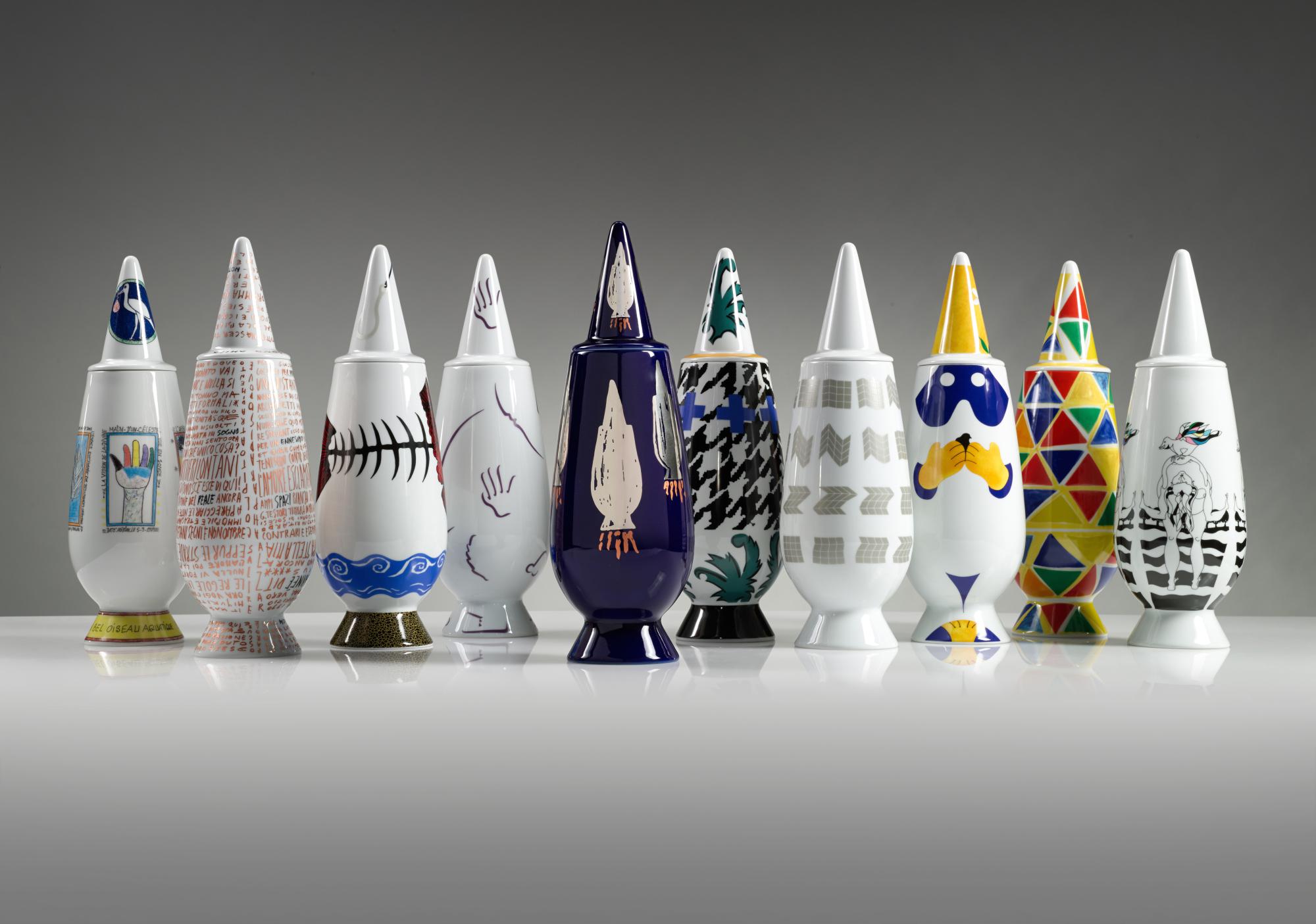
A set of ten vessels with lids from the collection from a Sotheby’s auction, Life is Beautiful: Milan last year. Sadly there are only a few remaining complete sets. Museums such as Musee des Arts Decoratifs in Paris have complete sets, as do a number of aggressive collectors.
Image courtesy of: Sotheby’s
The collection begun with Mendini’s own archetypal design of an elongated bulb-shaped vessel. The interesting vase had the dimensions of 15.5″ in height with a flared base and a conical lid. The vessel was produced in a Germany from white porcelain.
In order to design the remaining 99 vessels, the architect called upon a wide variety of international artists, designers, and creative teams. Both well-known and unknown, each decoration was (courtesy of 1st Dibs), “to be applied as an indelible decal.” Every unique vessel was produced in an edition of 100 pieces… a total of 10,000 copies of each vase was produced in total.
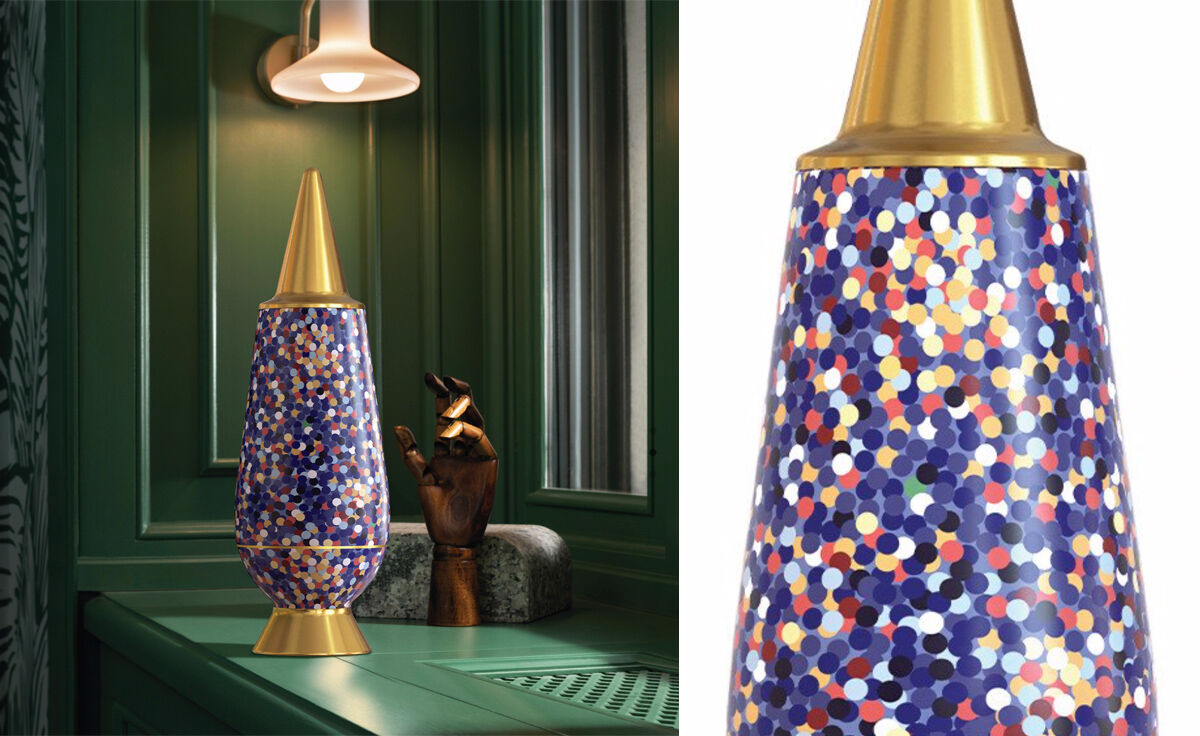
Alessandro Mendini’s Proust vase is both art and design; with this piece, the architect hoped to give collectors with a passion for unique objects something distinctive to collect. This design’s lid and base is decorated with pure gold that is hand-applied. Titled the Proust vase, the vase was inspired by the renowned writer, Marcel Proust.
Image courtesy of: Hive Modern
Vessels from the collection were scattered throughout the world; thankfully, a division of the Italian maker Superego (an online gallery), managed to acquire a complete set of the vases last year. This unbelievable collection was put up for sale on 1st Dibs.
It can be said that altogether, the vases and their lids are a perfect, miniature example of late 20th-century decorative arts. However not just Italian style is represented, motifs from Japan, Central Africa, Scandinavia, and China are presented as well. Among those are contributions from prominent figures of postmodernism such as Ettore Sottsasss, Michael Graves, and Philippe Starck.
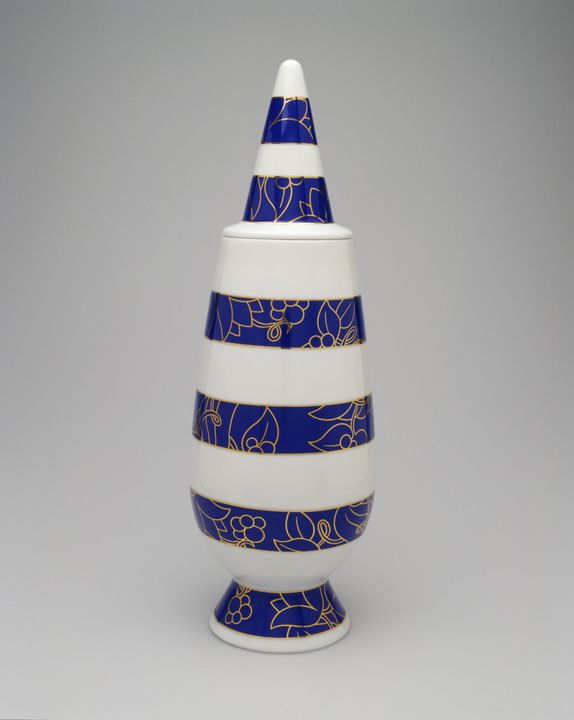
This design by Michael Graves is one of the twelve designs that were re-issued (in a series of about 500 pieces) due to the overwhelming demand of vessels by specific designers.
Image courtesy of: Powerhouse Collection
Mendini initiated the project as (courtesy of Powerhouse Collection), “experimental research into handmade objects and their ’emotional content’, which could inform and inspire the design of mass-produced objects.” Specifically, the medium of ceramics was chosen because of the “ancient origins of the medium’s form’s, decorations and processes.”
Each vessel was wheel-thrown and cast in white porcelain; identical in form, material, and color- they each began their life in the exact way other mass-produced objects do. However the complete collection shows that the similarities end there. Each design was copied on one-hundred identical vases, each numbered and stamped with the name of the contributing designer.
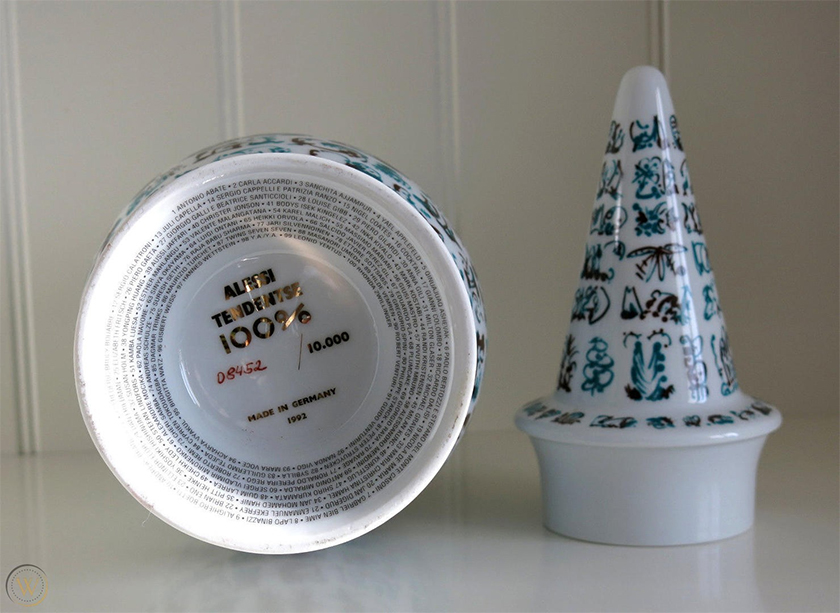
Number 85 from the collection, designed by Dagmar Trinks, Germany. This specific design was one of the original series of 100, no later reproductions or miniature vases were produced.
Image courtesy of: Worth Point
Medini said, “I have always considered design to be a creative discipline with an artistic and poetic input. It serves to bring a touch of transcendence to our consumer society, to distinguish between function and emotion, and to provoke surprise and touch our souls with the beauty of our objects.”
